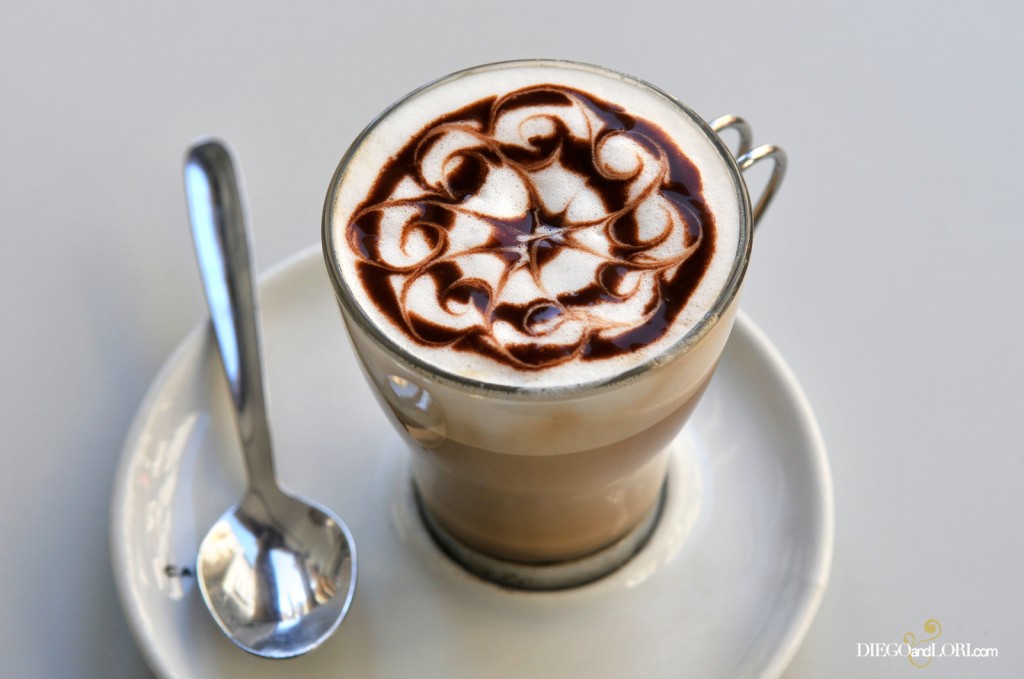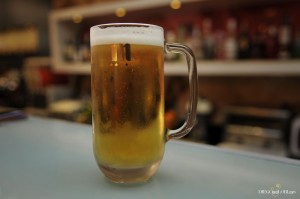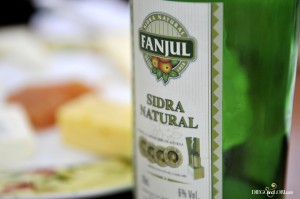
Spaniards love to celebrate any chance they get with a cold draft beer or a glass of red wine. You’ve seen images from festivals like San Fermin or Vaquillas where sangria is poured all over the crowds. Drinks are an important part of their culture, and ordering what you want, how you want it, can be quite difficult while traveling.
Imagine what it’s like for a foreigner to walk into a Starbucks for the first time. Their English is not-so-good and they want to order just a simple coffee: Short, Tall, Grande or Venti — Bold Pick of the Day, Caffé Misto, Decaf, Nonfat, Whole, 2 percent or Soy milk, Iced, Sweetened or Unsweetened? It can be just as complicated as that in Spain.
So, if you’re traveling to Spain this summer, I present to you The Quick and Dirty Spanish Survival Drink Guide: How to Order a Drink in Spain. Different regions vary slightly, but overall I think you’ll be able to get what you want.
Typically for breakfast, Spaniards order what we consider a cappuccino (café con leche) or espresso (café solo). When they take their late morning break (almuerzo), they’ll order beer (una caña) or a small glass of wine (un chato de vino) with a sandwich (bocadillo) and another espresso (solo or cortado). During lunch, it’s quite typical to have wine, usually red (tint), which comes with most daily menus (menú del día). Warning, you’ll need a nap (siesta) after lunch. After work, some will have a beer at a local bar and then have dinner (cena) around 10:00 p.m., which may or may not consist of beer or wine. Hard alcohol is usually saved for special nights and weekends.
The Quick and Dirty Spanish Survival Drink Guide: How to Order a Drink in Spain
To order, try asking: “I want… a beer” ( “Yo quiero… una caña.”)
To be more Spanish say: “Can you give me… an espresso” (“¿me pone… un café solo?”)
To be kind after your request say: “Please.” (“Por Favor.”)
Coffee & Tea (Café y Té)
To ask for a coffee, you can say “Un café con leche” or tea “Un té.”
- Café con leche: Coffee with scalded milk in equal portions
- Caffé Americano: Espresso coffee with hot water, similar to brewed coffee
- Café Cortado: Espresso with a little milk
- Café Solo: Espresso
- Café Bonbon: Espresso with sweetened condensed milk
- Café Carajillo: Espresso with brandy or whiskey
- Café Descafeinado de máquina: Decaffeinated coffee from a machine
- Café Descafeinado de sobre: Decaffeinated coffee from a packet or bag
- Té: Caffeinated black tea or Green tea (Té Verde)
- Infusión: Herbal/decaffeinated teas — Mint (poleo menta), Chamomile (manzanilla)
- Cola Cao: Hot chocolate powder mixed with milk or water
- Tip 1: Typically, places have white sugar (azúcar), saccharin (sacarina) or honey (miel).
- Tip 2: You can order any of these with ice (“hielo” sounds like “yellow”) to make iced coffees. “Un cortado con hielo, por favor.”)
Beers (Cervezas)
You can order a draft beer (una caña) or a bottle (una botella) of beer if you prefer.
- Caña: about a 7-8-ounce draft beer
- Jarra (har’-rah): a glass with a handle usually about a pint
- Tubo: a thin, tall 10-ounce glass
- Cerveza de Importación: various foreign beers like Bud, Carlsberg, Heineken
- Clara con Limón: beer with a lemon drink (Fanta Limón or Jarabe de Limón)
- Mojada: beer with sparkling soda (gaseosa)
- Negra: Dark Beer
Wine, Cider & Sparkling Wine (Vino, Sidra y Cava)
To order wine, ask for a glass (una copa) or a bottle (una botella).
- Cava: Spanish sparkling wine known as champagne of which almost 95 percent is produced in the region of Cataluña.
- Sangria: Red wine mixed with chopped fruit or juice, a sweetener, and brandy or cognac. To order, ask for a glass (una jarra de sangria).
- Sidra: A fermented juice typically made from apples, it contains 4-6 percent alcohol. Asturias is most known for sidra. One popular brands is Fanjul.
- Tinto de verano: red wine and lemonade (refreshing in summer)
- Vermut: Known as vermouth, this wine drink is usually taken before lunch and contains a variety of 150 aromatics including spices, seeds, herbs, cloves, flowers, roots, barks, olives. The herbs are absorbed by alcohol and then combined with wine and sugar. The most popular brands are Cinzano and Martini. Ask for red (rojo/de color) or white (blanco).
- Vino Blanco: White Wine
- Vino Rosado: Rosé Wine
- Vino Tinto: Red Wine — Some recommended wine regions in Spain are: Rioja, Rivera del Duero, and Somontano.
Drinks (Bebidas)
- Agua con gas: Sparkling mineral water
- Agua sin gas: Bottled water — cold (fría), el tiempo (room-temperature)
- Leche: Milk — whole (entera), semi-skimmed (semidesnatada), skimmed (desnatada)
- Horchata: a sweet milky drink made from tiger nut typically found in Valencia during summer
- Refrescos: Soft Drinks — Coca Cola, Fanta Naranja (orange), Fanta Limón (lemon), Sprite, Tónica (tonic water)
- Zumo: Juice: orange (naranja), pineapple (piña), peach (melocotón), apple (manzana)
So, I hope this guide will help you. Print it out or keep a bookmark on your iPad while you enjoy your wild excursion to the Iberian Peninsula!





